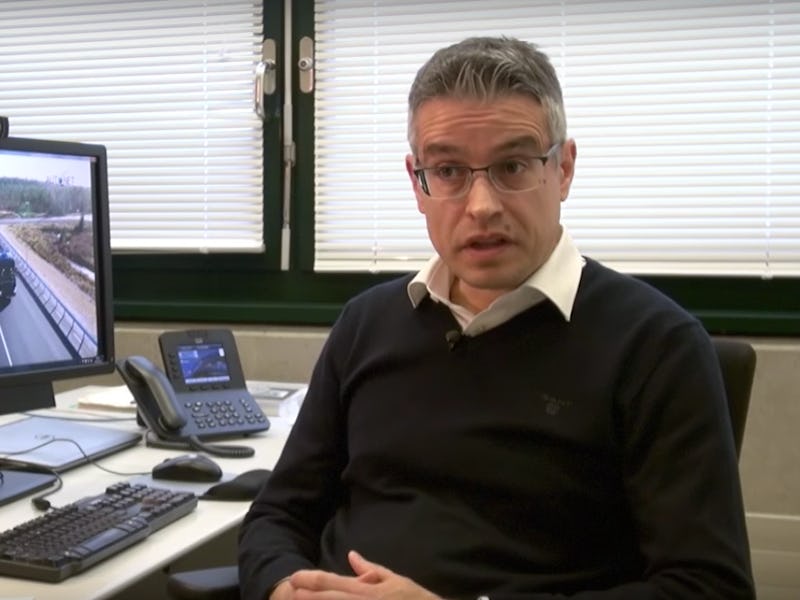A new algorithm from a team of Swiss researchers allows autonomous cars to merge with human traffic on highways with the flexibility of a school of fish.
Researchers from the Distributed Intelligent Systems and Algorithms Laboratory at the Ecole Polytechnique Federale de Lausanne (EPFL) in Switzerland developed a new way for autonomous cars to drive with human traffic. Their work is a major step forward for autonomous car algorithms, which have primarily turned autonomous cars into blocky platoons along highways. The algorithm allows for a connected network of different kinds and numbers of autonomous vehicles driving on multiple lanes, that can incorporate human-driven vehicles. Their algorithm was tested on the road for the first time in October, and paves the way for Autonet 2030’s goal of deployment in 2020-2030.
The researchers from the Distributed Intelligent Systems and Algorithms Laboratory at Lausanne, Switzerland’s developed a new way for autonomous cars to drive with human traffic. Their work is a major step forward for autonomous car algorithms, which have primarily turned autonomous cars into blocky platoons along highways. The algorithm allows for a connected network of different kinds and numbers of autonomous vehicles driving on multiple lanes, that can incorporate human-driven vehicles. Their algorithm was tested on the road for the first time in October, and paves the way for Autonet 2030’s goal of deploying the technology in 2020 to 2030.
Alcherio Martinoli, the head of the Distributed Intelligent Systems and Algorithms Laboratory told phys.org that they have been working on this kind of algorithm for 10 years. The lab focuses on developing optimized systems for intelligent, distributed networks, and worked with Autonet 2030, an EU funding program to gradually incorporate autonomous vehicles into popular use.
A simulation of the algorithm adjusting the convoy to incoming traffic.
Typical methods for organizing autonomous cars on a roadway have been based on the idea of platoons – single lanes of autonomous cars spaced equally along the road, following a single leader or central intelligence. The algorithm developed by Martinoli’s team instead uses a multi-lane convoy approach. In the convoy, the autonomous cars aren’t following any one leader, but moving as a unit communicating using vehicle to vehicle (or V2V) positioning technology to flow around each other for optimal spacing and speed.
Instead of being stuck in a single line, which can become unstable as more and more cars add to the platoon, a convoy is similar to how a school of fish moves as a group. Each vehicle is positioning itself, so when one exits or enters the highway, the algorithm enables the entire convoy to move to change its spacing to accommodate.
At the end of October, the researchers ran a proof of concept test of this algorithm with two autonomous vehicles and a manually-driven car that was built to communicate with the autonomous cars using V2V methods. The test was successful, showing that the autonomous vehicles could adapt to allow the manual car to merge in between them. With the 2020-2030 timeline on the project, the widespread use of V2V communication in manual cars will make autonomous convoys a likely pattern for mixed traffic and the level 3 or 4 autonomous vehicles we expect on the road in the near future.
